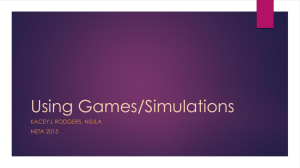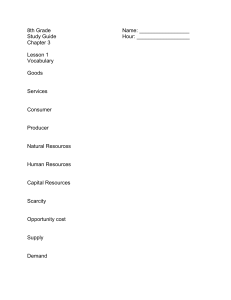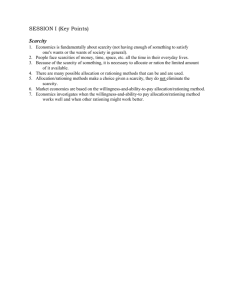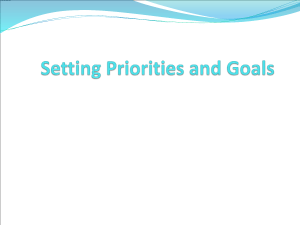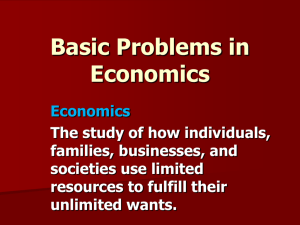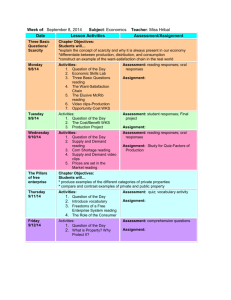GETTING DOWN TO Business: Scarcity and opportunity costs
advertisement
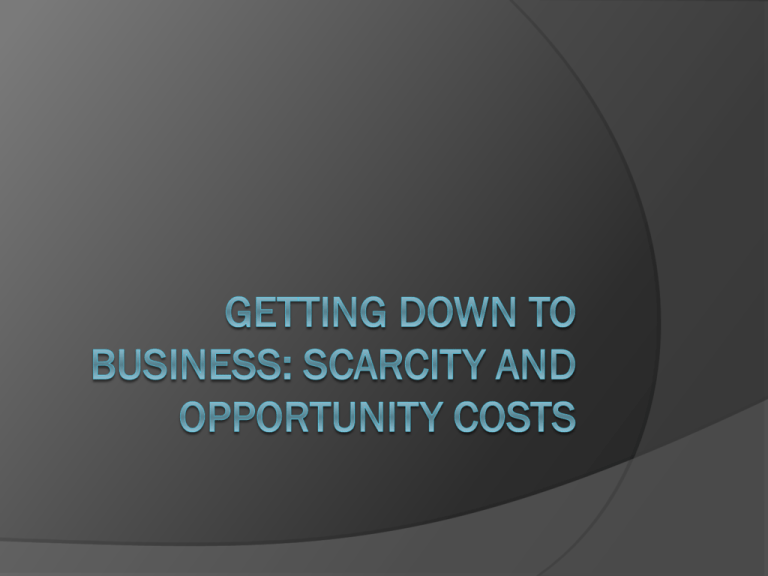
Questions: Does Bill Gates have to deal with scarcity? What about the United States Government? Is it possible to eliminate people’s wants? The Two Paths of Scarcity… Because we know scarcity exists, there arises two distinct consequences: 1.) The need for a rationing device 2.) Competition What is a rationing device? A rationing device is a way to decide who gets what amount of available goods or resources (add to your definitions list). Obvious Example: MONEY!!! However, if money didn’t exist, do you think people would develop an alternative rationing device? Competition We live in a competitive world: Grades, sports, attention, more friends, nicest car…etc. What is one thing you are competitive about? Draw a flow chart showing the two paths of scarcity. Opportunity Costs Add this to your list of definitions: Opportunity Costs: the most valuable thing you give up when you make a choice (the next best thing). It can only be 1 thing!!! Trade-offs are basically the same as opportunity costs (when I choose one thing over the other, I am giving something up) Opportunity Costs Continued Opportunity Costs change the way people behave. Example: Ice Cream and cookies ○ Everyone knows that I love cookies. If my only dessert option was ice cream, most likely I would choose that. However, given the choice, I would choose cookies over ice cream every time. The opportunity cost of choosing ice cream is loosing out on cookies. The Importance of Good Information… We talked in class today about how important it was to have all the information before making a decision. When one party holds more information than another, in economic terms, we call this asymmetric information (write that down in your definition list). Examples of Asymmetric Information The Used Car Salesman: A used car salesman wants to fetch a high price for a quality used vehicle. However, because the buyer doesn’t trust the salesman, and doesn’t know all of the information about the car, the buyer offers a much lower amount than the salesman is willing to accept, and there is no deal. Insurance… Insurance companies must always work with asymmetrical information. When offering car insurance, there is simply no way to know for sure whether one driver is a safe driver or not. Therefore they must charge a higher price than if they could divide the good and bad drivers. Examples in Real Life… Think of a time in your life when you either had more information than a person you were involved with, or someone withheld important information from you…how did that impact your decision? Quiz Time!!! True of False: Even rich people must deal with scarcity. Scarcity only ever takes one path. Money is an example of a rationing device. We live in a competitive world. Opportunity costs are basically the same thing as trade-offs. There can be multiple opportunity costs. Asymmetric information is when everyone is on the same page.

